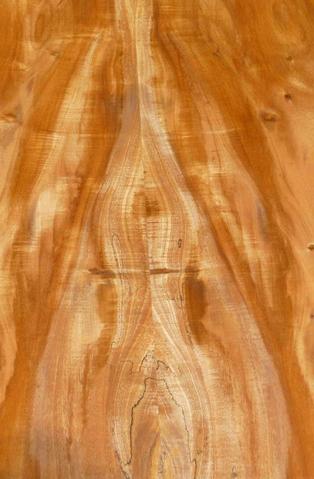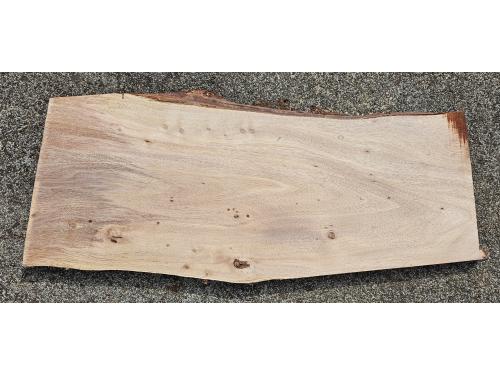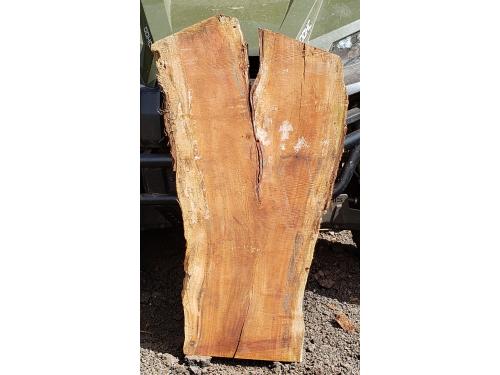
This tree, introduced about 1870 for shade in dry low lands, has become naturalized. It is identified by paired sharp spines usually present at base of leaf, twice pinnate leaves with 4 oblong leaflets, small creamy white flowers in balls of 3/8 inch (1 cm), and curved or coiled pink to brown pods with several shiny black seeds mostly covered by whitish pulp. Small to medium-sized tree to 60 ft (18 m) high and 2 ft(0.6 m) in trunk diameter, the short trunk and branches often crooked, with broad spreading crown and slender drooping twigs. Nearly evergreen but shedding old leaves as new pinkish or reddish foliage appears. Bark light gray, smoothish, becoming slightly rough and furrowed. Inner bark thick, light brown, and bitter or astringent. Sapwood is yellowish, and heartwood yellowish or reddish brown. Wood moderately hard, heavy, strong, and durable. It takes a high polish but is brittle and not easily worked.
Elsewhere, the wood is employed for general construction, boxes and crates, posts, and fuel. According to Neal (1965), the Hawaiian name ‘opiuma is from the resemblance of the seeds to the opium of commerce.









